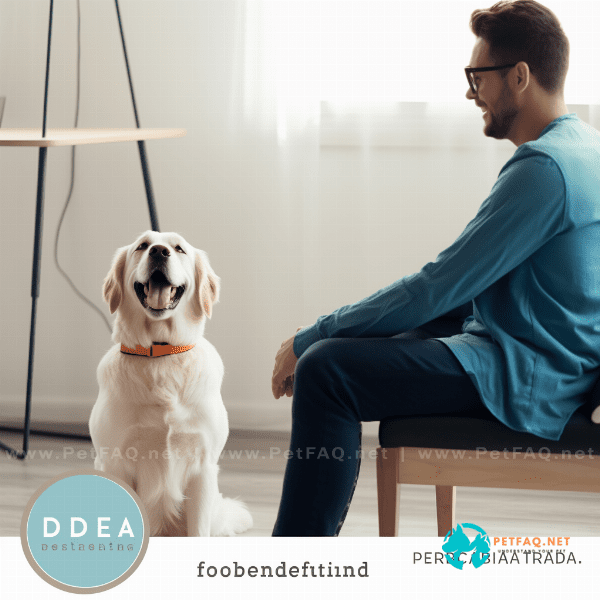Table of Contents
Start with Positive Reinforcement
Positive reinforcement is one of the most effective dog training techniques, and it involves rewarding your dog for exhibiting desirable behaviors. By providing positive feedback and rewards such as treats or praise, you can reinforce the behaviors you want to encourage and discourage those that you don’t.
To start with positive reinforcement, it’s important to identify what motivates your dog. Some dogs are food-motivated and will respond well to treats, while others may prefer praise or toys. Once you know what motivates your dog, you can use it to reinforce the behaviors you want to see more of.
When your dog exhibits a desirable behavior, such as sitting or staying, immediately reward them with their chosen motivator. Be consistent in your rewards, and always provide them immediately after the behavior you want to reinforce. This will help your dog understand what behavior is being rewarded and increase the likelihood of them repeating it in the future.
It’s also important to avoid punishment or negative reinforcement when training your dog. This can include physical punishment, yelling, or withholding treats or affection. Punishment can cause fear, anxiety, and aggression in dogs, and it can undermine the trust and bond between you and your furry friend.
Instead, focus on positive reinforcement and be patient. Remember, training takes time and consistency, but with patience and a positive attitude, your dog can learn and grow into a well-behaved and happy companion.
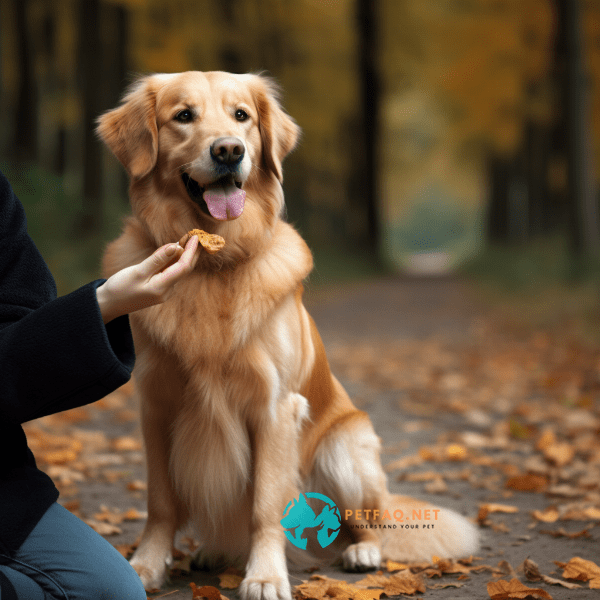
Establish Clear Communication
Clear communication is essential for successful dog training. Dogs don’t speak the same language as humans, so it’s important to find ways to communicate with them effectively. When training your dog, you’ll need to rely on body language, voice cues, and consistent signals to communicate your expectations.
The first step in establishing clear communication is to choose a consistent command for each behavior you want to teach your dog. For example, use the command “sit” consistently when you want your dog to sit down. Be sure to use the same tone of voice and gestures each time you give the command.
Next, practice using clear body language when giving commands. Dogs are very attuned to body language, so be sure to use consistent body language with each command. Use hand gestures, posture, and facial expressions to communicate what you want your dog to do.
In addition to verbal and nonverbal cues, use positive reinforcement to communicate effectively with your dog. When your dog exhibits a desired behavior, praise them and offer a treat or toy as a reward. Over time, your dog will come to associate positive behaviors with positive outcomes, and you’ll be able to communicate more effectively with them.
Finally, be patient when establishing clear communication with your dog. It can take time for your dog to learn your commands and understand your signals. Consistency is key, so be sure to use the same commands and gestures each time you train your dog. With practice, your dog will begin to understand what you want from them, and you’ll be on your way to a successful training relationship.
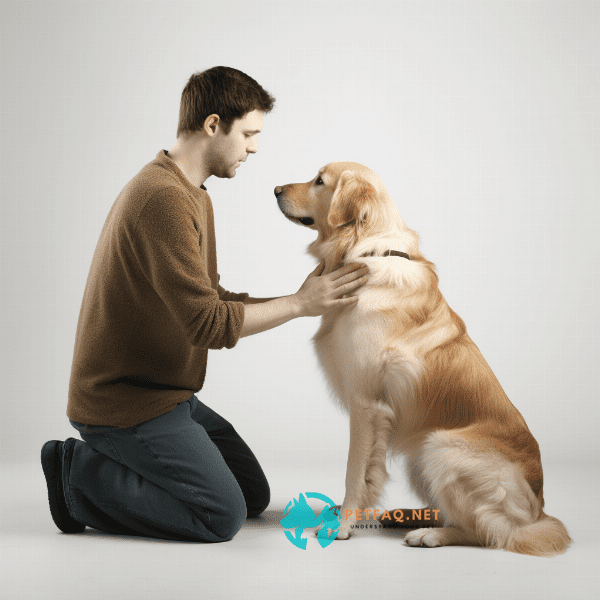
Create a Consistent Routine
Creating a consistent routine is a crucial part of training your dog. Dogs thrive on routine and predictability, so establishing a consistent routine can help them feel secure and confident in their environment.
When it comes to training your dog, consistency is key. Establish a regular routine for feeding, playtime, and exercise, as well as training sessions. Dogs learn best when they are in a relaxed and receptive state, so schedule training sessions when your dog is well-rested and not distracted by other activities.
Stick to a regular schedule for training sessions, too. Aim for short, frequent sessions throughout the day rather than long, sporadic sessions. This will help your dog retain what they’ve learned and build on their progress.
It’s also important to be consistent in your training methods. Use the same commands and rewards each time you train your dog, and be sure to provide immediate feedback when your dog exhibits desirable behaviors.
Consistency extends beyond training, too. Establish consistent rules and boundaries for your dog, and be sure to enforce them consistently. For example, if your dog isn’t allowed on the furniture, don’t allow them on the furniture, even when you’re feeling lenient. Inconsistency can confuse your dog and undermine their training progress.
By establishing a consistent routine for your dog, you can help them feel secure and confident in their environment, and set them up for success in their training journey.

Use Treats Strategically
Treats can be a valuable tool in dog training, but it’s important to use them strategically. Treats can motivate your dog to learn and reinforce positive behaviors, but overuse or inappropriate use of treats can be counterproductive and even harmful.
When using treats in dog training, choose small, soft treats that your dog can consume quickly. Use treats sparingly and strategically, offering them only when your dog exhibits a desirable behavior. For example, when teaching your dog to sit, offer a treat immediately after they sit down.
It’s also important to gradually reduce your use of treats as your dog learns the behavior. Over time, your dog should learn to respond to your command without needing a treat every time.
It’s important to note that treats should never be used as a bribe or substitute for good training. They should be used to reinforce positive behaviors that your dog has already learned, not to coax them into behaving a certain way.
In addition to treats, be sure to use plenty of verbal praise and physical affection when training your dog. Dogs respond well to positive reinforcement in all forms, so offer plenty of praise and affection when your dog exhibits good behavior.
Overall, treats can be a useful tool in dog training, but they should be used strategically and in combination with other forms of positive reinforcement. With consistent training and positive reinforcement, your dog can learn to exhibit positive behaviors and become a well-behaved and happy companion.
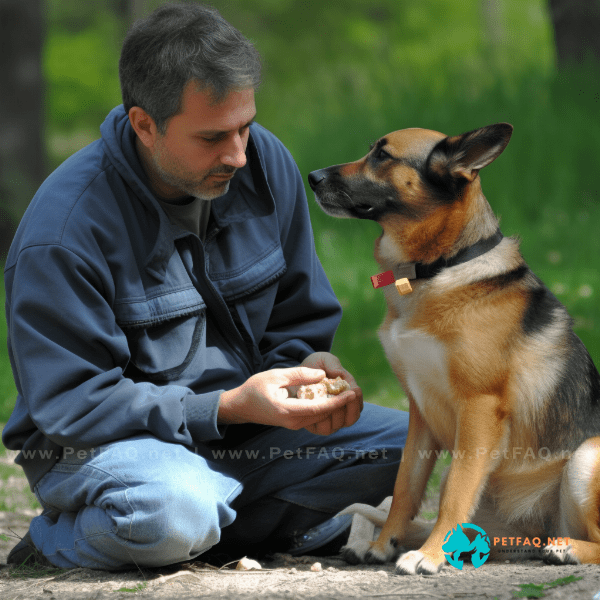
Teach Basic Commands
Teaching basic commands is an essential part of dog training. Basic commands like “sit,” “stay,” “come,” and “heel” provide a foundation for more advanced training and can help keep your dog safe and well-behaved.
When teaching basic commands, start with one command at a time and be patient with your dog. Dogs learn at different rates, so it may take some dogs longer to learn certain commands.
To teach the “sit” command, hold a treat in front of your dog’s nose and move it upwards, so their head follows the treat and their hindquarters naturally lower to the ground. Say the word “sit” as soon as your dog is in the sitting position and reward them with the treat. Repeat this process several times a day until your dog associates the word “sit” with the action of sitting.
To teach the “stay” command, ask your dog to sit and then hold out your hand with your palm facing your dog and say “stay.” Gradually increase the amount of time your dog stays in the sitting position before giving them a treat and releasing them from the command.
To teach the “come” command, say “come” in a happy, encouraging tone of voice and back away from your dog, while holding out a treat or toy. When your dog comes to you, reward them with the treat or toy.
To teach the “heel” command, use a short leash and guide your dog to walk beside you on your left side. Say “heel” and give your dog a treat when they are in the correct position. Gradually increase the amount of time your dog walks beside you before giving them a treat.
Remember to always use positive reinforcement and patience when teaching basic commands. With consistent practice, your dog will learn to respond to your commands and become a well-trained and obedient companion.
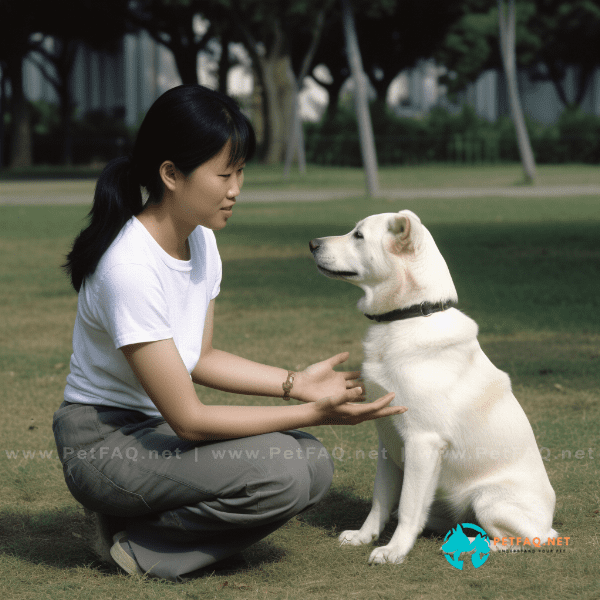
Address Problem Behaviors
Addressing problem behaviors is a crucial part of dog training. Problem behaviors can range from mild annoyances, such as jumping up on guests, to more serious issues like aggression or destructive behavior.
When addressing problem behaviors, it’s important to understand the root cause of the behavior. Is your dog acting out of fear or anxiety? Are they bored or under-stimulated? Identifying the underlying cause of the behavior can help you develop an effective training plan.
For mild problem behaviors, such as jumping up on guests, it’s important to be consistent in your training. Teach your dog a command, such as “off,” and reward them when they follow the command. You may also want to teach your dog an alternative behavior, such as sitting or lying down, that they can perform instead of the problem behavior.
For more serious problem behaviors, such as aggression or destructive behavior, it’s important to seek professional help from a qualified dog trainer or behaviorist. These behaviors can be complex and may require a more specialized approach to training.
It’s also important to avoid punishment-based training methods when addressing problem behaviors. Punishing your dog for problem behaviors can lead to anxiety and fear, which can make the behavior worse.
Instead, use positive reinforcement to train your dog to exhibit desirable behaviors. Reward your dog for good behavior and redirect them when they exhibit problem behaviors.
Addressing problem behaviors can take time and patience, but with consistent training and positive reinforcement, you can help your dog overcome their problem behaviors and become a well-behaved and happy companion.
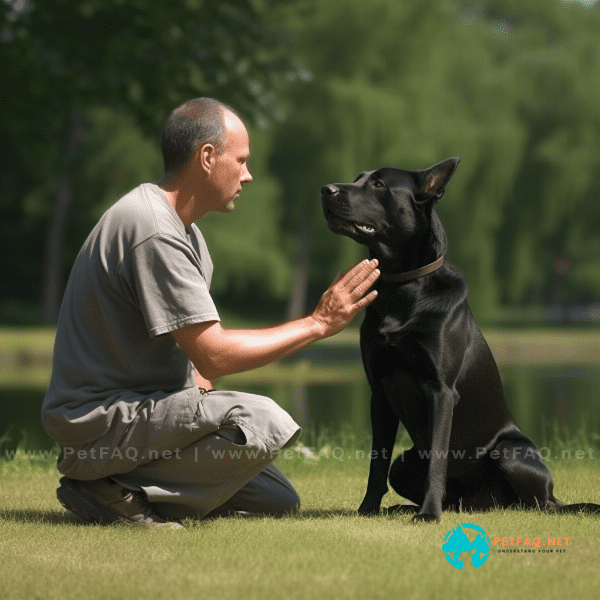
Leash Training Techniques
Leash training is an important part of dog training. A well-trained dog should be able to walk calmly on a leash without pulling or dragging their owner.
When leash training your dog, it’s important to start with a comfortable, well-fitting collar or harness. Avoid using choke collars or prong collars, as they can cause pain and discomfort to your dog.
Begin by walking your dog in a quiet, low-distraction area, such as your backyard or a quiet street. Use positive reinforcement to encourage your dog to walk calmly on the leash. Reward your dog with treats and praise when they walk without pulling or dragging.
If your dog starts to pull or drag, stop walking and stand still. Wait for your dog to come back to you and reward them with treats and praise. This teaches your dog that pulling on the leash is not rewarded and that walking calmly is the desired behavior.
You may also want to use a training aid, such as a no-pull harness or a head collar, to help your dog learn to walk calmly on the leash. These training aids provide gentle pressure that can help redirect your dog’s attention and discourage pulling.
Consistency is key when leash training your dog. Practice walking on the leash every day and be patient with your dog. It may take some time for your dog to learn to walk calmly on the leash, but with consistent training and positive reinforcement, they will eventually learn to be a well-behaved walking companion.
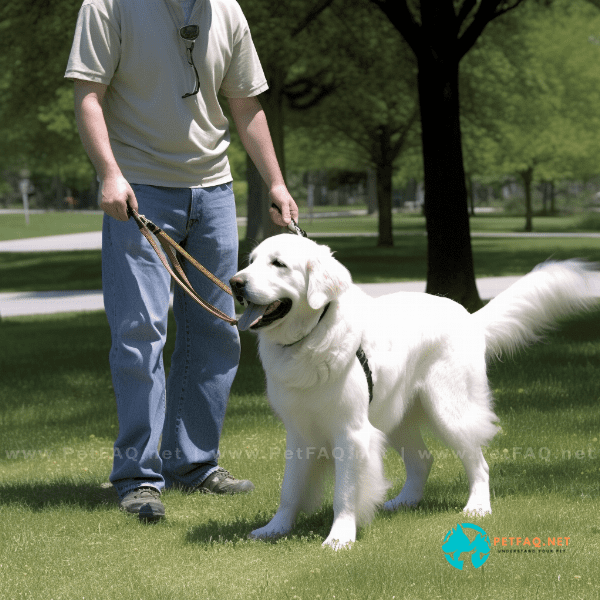
Socialization with People and Other Dogs
Socialization is an important aspect of dog training that helps your dog learn to interact with people and other dogs in a positive and friendly manner. Socializing your dog from a young age can help prevent fear and aggression towards people and other dogs.
To socialize your dog with people, start by exposing them to a variety of people of different ages, genders, and ethnicities. Encourage strangers to approach and pet your dog in a calm and friendly manner. Reward your dog with treats and praise when they interact calmly and positively with strangers.
Socializing your dog with other dogs is also important. Start by exposing your dog to friendly, well-behaved dogs in a controlled environment, such as a dog park or a training class. Allow your dog to sniff and interact with the other dogs, but keep a close eye on their behavior to prevent any aggression or fighting.
It’s important to socialize your dog in a positive and gentle manner. Avoid overwhelming your dog with too many new experiences at once, as this can lead to fear and anxiety. Instead, introduce new experiences gradually and with positive reinforcement.
It’s also important to continue socializing your dog throughout their life. Dogs who are not regularly socialized can become fearful and aggressive towards new people and dogs.
In addition to socialization, it’s important to teach your dog basic obedience commands, such as sit, stay, and come. These commands can help you control your dog in social situations and prevent any unwanted behaviors.
Remember, socialization is an ongoing process that requires patience and consistency. With regular socialization and positive reinforcement, your dog can learn to be a friendly and well-behaved companion.

Incorporate Mental Stimulation
One way to incorporate mental stimulation into your dog’s training is by teaching them new tricks and commands. Dogs love to learn and enjoy the challenge of mastering new skills. Start with basic commands like sit, stay, and come, and gradually progress to more advanced commands like shake, roll over, and play dead.
You can also incorporate mental stimulation into your dog’s daily routine by using puzzle toys and interactive games. These toys are designed to challenge your dog’s problem-solving skills and keep them entertained for longer periods of time. Hide treats inside puzzle toys or scatter them around your yard for your dog to find.
Another way to provide mental stimulation is by taking your dog on different walking routes or allowing them to explore new environments. This helps your dog learn new smells and sights and keeps them mentally stimulated and engaged.
Training classes and activities, such as agility or obedience training, are also great ways to provide mental stimulation for your dog. These activities require your dog to think and problem-solve, which helps keep their mind engaged and active.
Remember, mental stimulation is just as important as physical exercise for your dog’s overall health and well-being. Incorporating mental stimulation into your dog’s training can help prevent boredom, reduce anxiety, and improve their overall behavior. So, get creative and find ways to challenge your dog’s mind while having fun together!
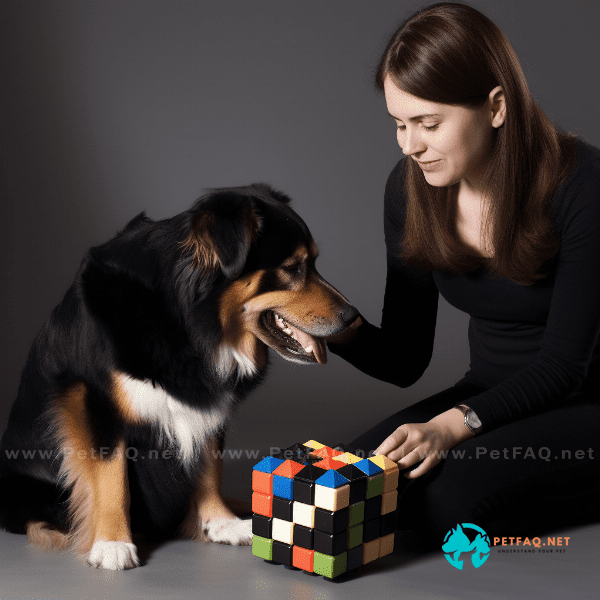
Patience and Persistence: The Keys to Success
Training your dog can be a rewarding experience, but it’s important to remember that it takes patience and persistence to achieve success. Dogs, like humans, are individuals with their own personalities and temperaments. Some dogs may learn quickly, while others may take more time to grasp new concepts.
Patience is key when it comes to training your dog. Avoid getting frustrated or angry when your dog doesn’t understand a command or makes a mistake. Instead, remain calm and use positive reinforcement to encourage good behavior.
Consistency is also important when training your dog. Use the same commands and techniques each time you work with your dog, and avoid confusing them with mixed signals. Consistency helps your dog understand what is expected of them and reinforces good behavior.
Persistence is also crucial when it comes to training your dog. Don’t give up if your dog doesn’t learn a new command right away. Keep practicing, using positive reinforcement, and adjusting your techniques until you find what works best for your dog.
It’s also important to remember that training is an ongoing process. Dogs need regular reinforcement to maintain good behavior, so it’s important to continue practicing and training throughout their lives.
Finally, make training a positive experience for both you and your dog. Use treats, praise, and other rewards to encourage good behavior, and avoid using punishment or aggression. Positive reinforcement creates a bond of trust and respect between you and your dog, making training an enjoyable experience for everyone involved.
Remember, patience and persistence are the keys to success when it comes to training your dog. With consistent and positive training techniques, you can help your dog become a well-behaved and happy companion.
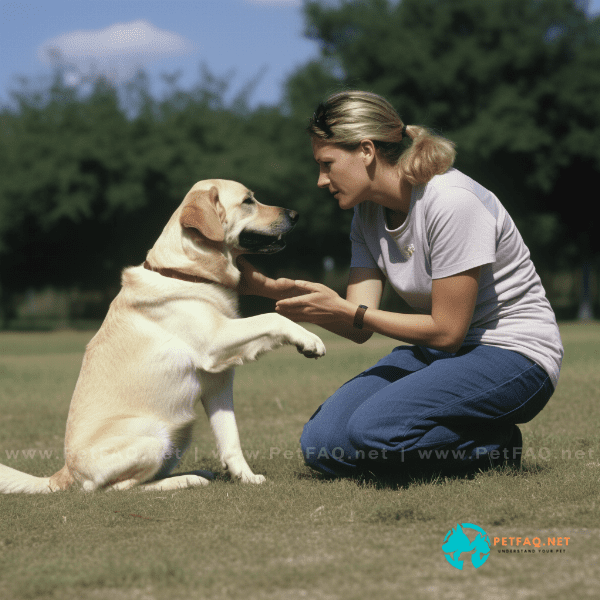
Frequently Asked Questions (FAQs) about Free dog training tips:
1. What are some effective methods for leash training a dog?2. What are some ways to teach my dog to wait patiently for their food?
3. Are there any free tips for training my dog to come when called?
4. What are some free tips for house training a dog?
5. How can I train my dog to not beg for food without spending any money?



